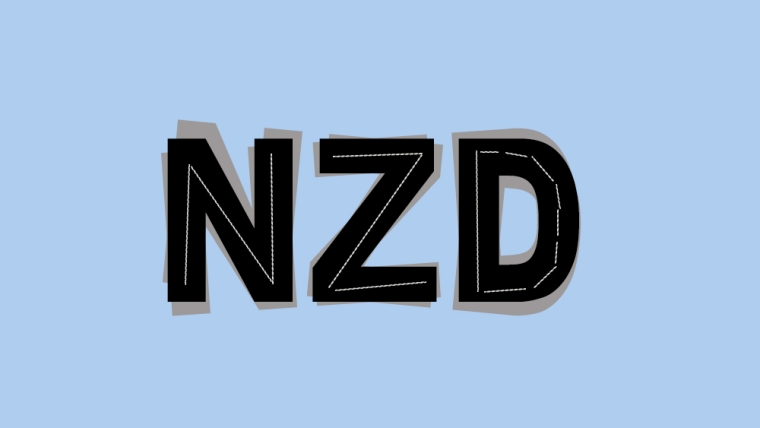
US equities have broken a winning streak and are modestly weaker overnight. Weaker risk sentiment has supported Treasuries, with the 10-year rate down 4bps to 4.11%. The USD is broadly stronger and the yen remains under pressure. NZD has weakened towards 0.58. All eyes will be on the RBNZ policy update today, with the market split between views of a 25 or 50bps rate cut.
US equities are softer, with a seven-day positive streak for the S&P500 on track to be broken today, with the index currently down 0.4%. Sentiment hasn’t been helped by a report on Oracle suggesting that its fast-growing cloud business that is powered by Nvidia chips has had margins of only 14% in the past year and in some cases the company has lost considerable sums on rentals of small quantities of both newer and older versions of Nvidia’s chips. Oracle is down 4% and the report has spilled over into other tech stocks. The Nasdaq index is currently down 0.6%.
US Treasuries have been supported as US equities have fallen. Rates pushed lower from the US open and the 10-year yield is down 4bps for the day and from the NZ close to 4.11%. European rates showed small net movements.
In economic news, the NY Fed’s survey of expectations showed year ahead inflation expectations rising 18bps to a five-month high of 3.38%. Longer term inflation expectations for 3 and 5 years ahead rose by 4-5bps, to 3.05% and 2.97% respectively.
German factory orders fell for a fourth consecutive month, down 0.8% m/m in August, against market expectations for a 1.2% lift. The breakdown showed much weaker orders from abroad, with foreign orders down 4.1% and orders from within the euro area down 2.9%, while domestic orders surged 4.7%, the latter reflecting increasing orders in the defence sector.
In currency markets, the yen has continued to weaken, following the shock selection of Takaichi as the new LDP leader. Her selection is widely seen as triggering a slower timeline for tighter BoJ monetary policy. The yen is the weakest of the majors for the day and USD/JPY has trended higher overnight, to 151.50. NZD/JPY is trading close to, but just under, 88.
The USD is broadly stronger overnight and NZD and AUD have underperformed European currencies. The NZD found some support overnight just above 0.58, where it currently sits. NZD crosses, apart from the against the yen, are all weaker. NZD/AUD has nudged down to 0.8810, and there have been modest falls against GBP and EUR.
Gold prices rose to a fresh record high, with the spot price peaking at USD3991 overnight. The most active future, currently the December contract, broke above USD4000 for the first time, peaking at USD4014, before retreating. The rapid rise in gold prices this year reflects rising speculative inflows into ETFs and central bank buying, including solid demand from China. Expectations of easier US monetary policy, inflation fears, geopolitical risks and dollar debasement from policy settings have all helped fuel the rally.
In domestic news yesterday, the QSBO was a mixed report with both positives and negatives to take out of the survey, but conveying a weaker economic backdrop compared to the ANZ business outlook survey, as it doesn’t capture the outperforming primary sector. While the survey didn’t clear the fog on the size of any likely RBNZ rate cut today, it encouraged the domestic rates market to push short-end rates slightly lower.
At the close, the market was pricing in 35bps of cuts for today’s meeting, an extra 2bps following the QSBO. A slightly more protracted easing was priced, with the terminal OCR rate falling to a new low of 2.20%, implying at least a further 75bps of cuts this cycle and a chance of 100bps. The 2-year swap rate was down 2bps to a fresh closing cycle-low of 2.62%. The curve was a touch steeper, with the 10-year rate down 1bp to 3.73%. The NZGB curve was also steeper, with short end rates down 2bps and no change in rates from 10-years maturity onwards.
Regarding today’s RBNZ’s Monetary Policy Review, Bloomberg’s survey shows 15 out of 25 economists expect a 25bps cut (with BNZ among them), with the remaining calling for 50bps. The 35bps priced for the meeting, suggests a slight leaning towards 25bps compared to 50bps. Uncertainty over how the RBNZ will interpret the recent soft Q2 GDP outturn and incorporate this into its updated forecasts, alongside other recent data, has contributed to the finely balanced market expectations. Either decision will likely drive a market reaction in short-rates and the NZD.
Elsewhere, Japanese wages and German industrial production figures will be released.
Daily exchange rates
Select chart tabs
Jason Wong is the Senior Markets Strategist at BNZ Markets.

We welcome your comments below. If you are not already registered, please register to comment.
Remember we welcome robust, respectful and insightful debate. We don't welcome abusive or defamatory comments and will de-register those repeatedly making such comments. Our current comment policy is here.